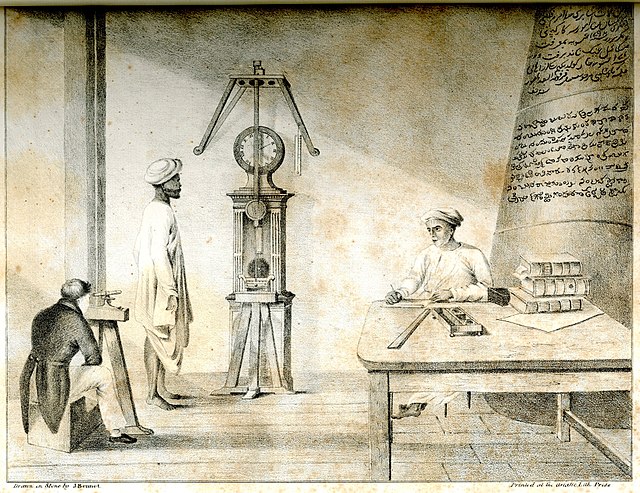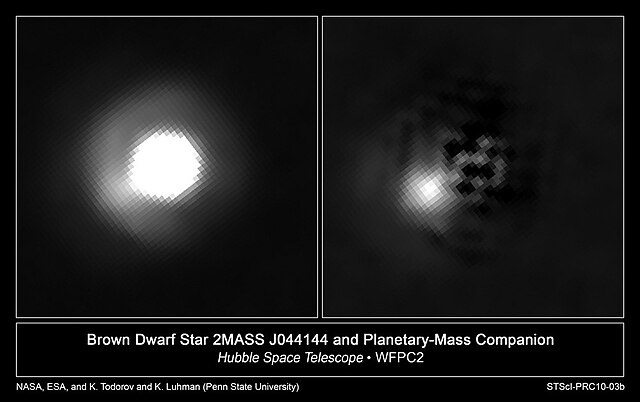The Madras Observatory was an astronomical observatory which had its origins in a private observatory set up by William Petrie in 1786 and later moved and managed by the British East India Company from 1792 in Madras. The main purpose for establishing it was to assist in navigation and mapping by recording the latitude and maintaining time standards. In later years the observatory also made observations on stars and geomagnetism. The observatory ran from around 1792 to 1931 and a major work was the production of a comprehensive catalogue of stars.
Madras Observatory, 1880
The observatory c. 1838
Inside of the Observatory in Goldingham's time
c. 1925
An exoplanet or extrasolar planet is a planet outside the Solar System. The first possible evidence of an exoplanet was noted in 1917 but was not then recognized as such. The first confirmation of the detection occurred in 1992. A different planet, first detected in 1988, was confirmed in 2003. As of 1 May 2024, there are 5,662 confirmed exoplanets in 4,169 planetary systems, with 896 systems having more than one planet. The James Webb Space Telescope (JWST) is expected to discover more exoplanets, and to give more insight into their traits, such as their composition, environmental conditions, and potential for life.
Exoplanet HIP 65426b is the first discovered planet around star HIP 65426.
The three known planets of the star HR8799, as imaged by the Hale Telescope. The light from the central star was blanked out by a vector vortex coronagraph.
2MASS J044144 is a brown dwarf with a companion about 5–10 times the mass of Jupiter. It is not clear whether this companion object is a sub-brown dwarf or a planet.
Coronagraphic image of AB Pictoris showing a companion (bottom left), which is either a brown dwarf or a massive planet. The data were obtained on 16 March 2003 with NACO on the VLT, using a 1.4 arcsec occulting mask on top of AB Pictoris.








